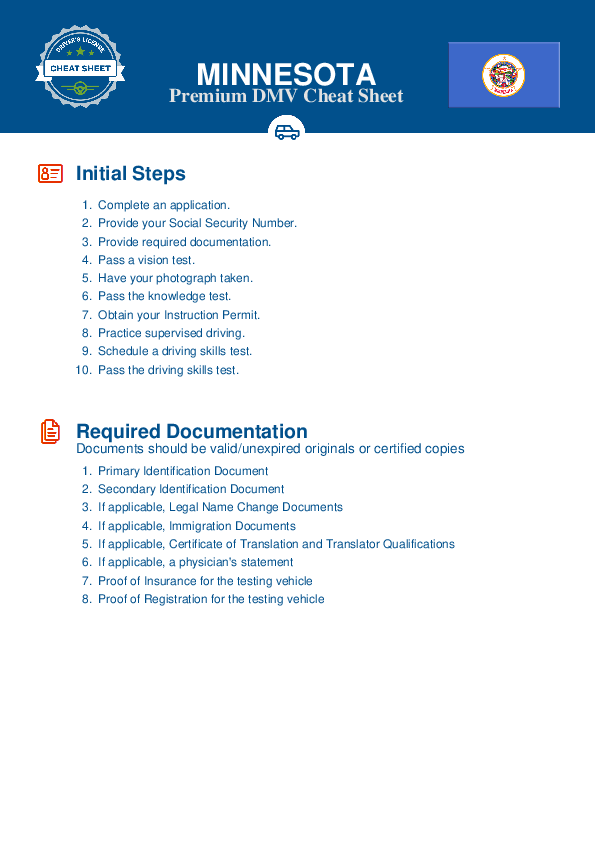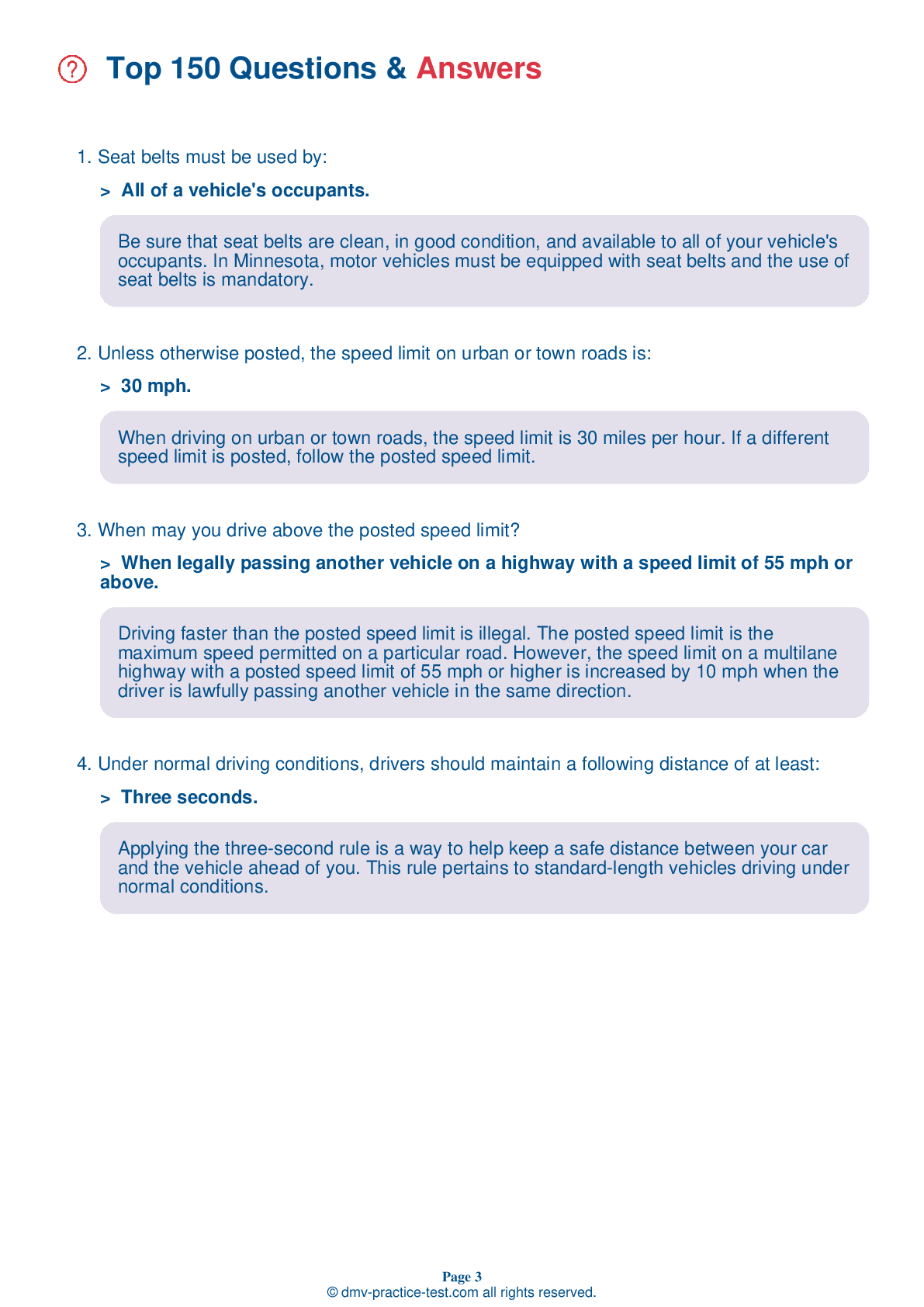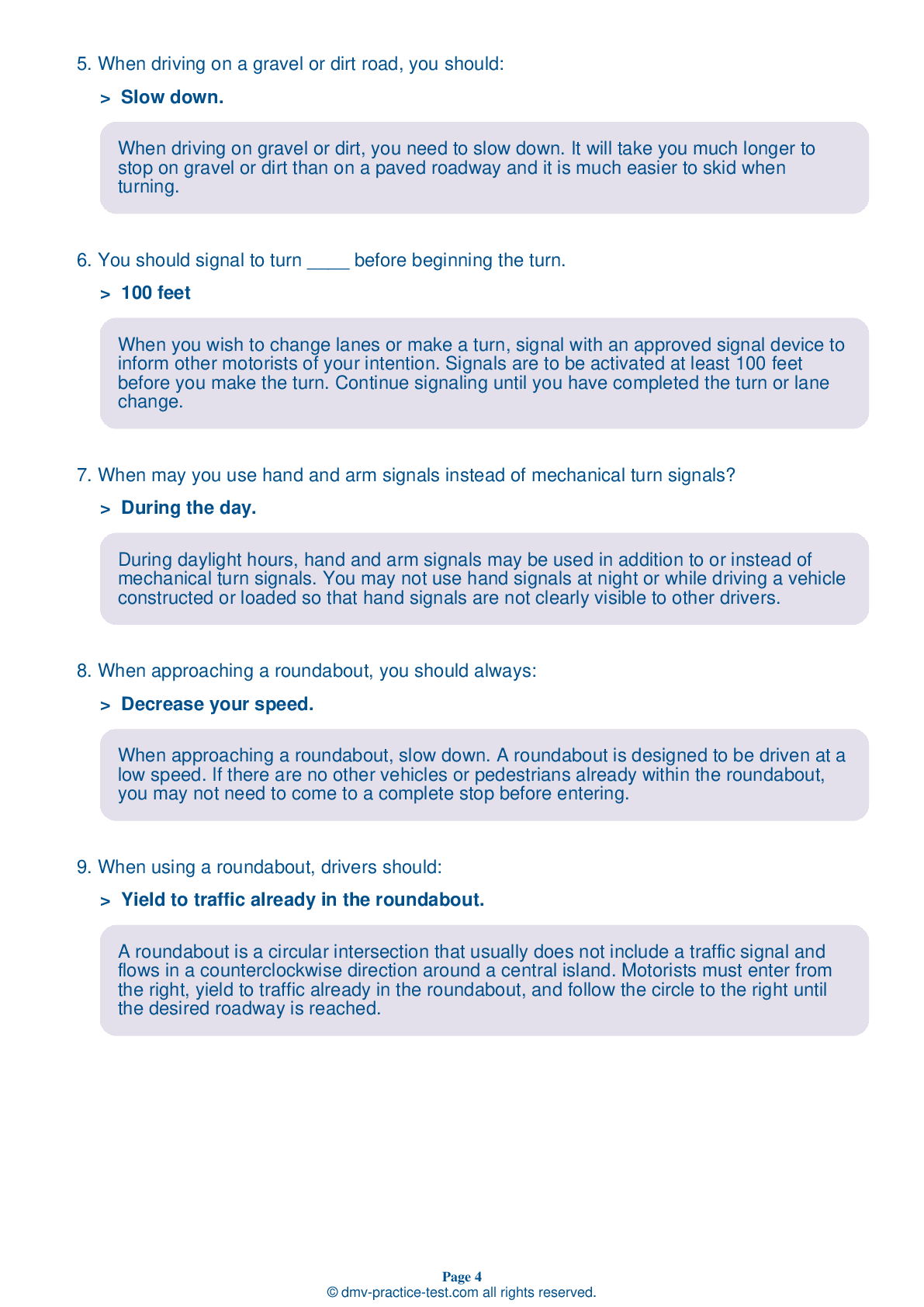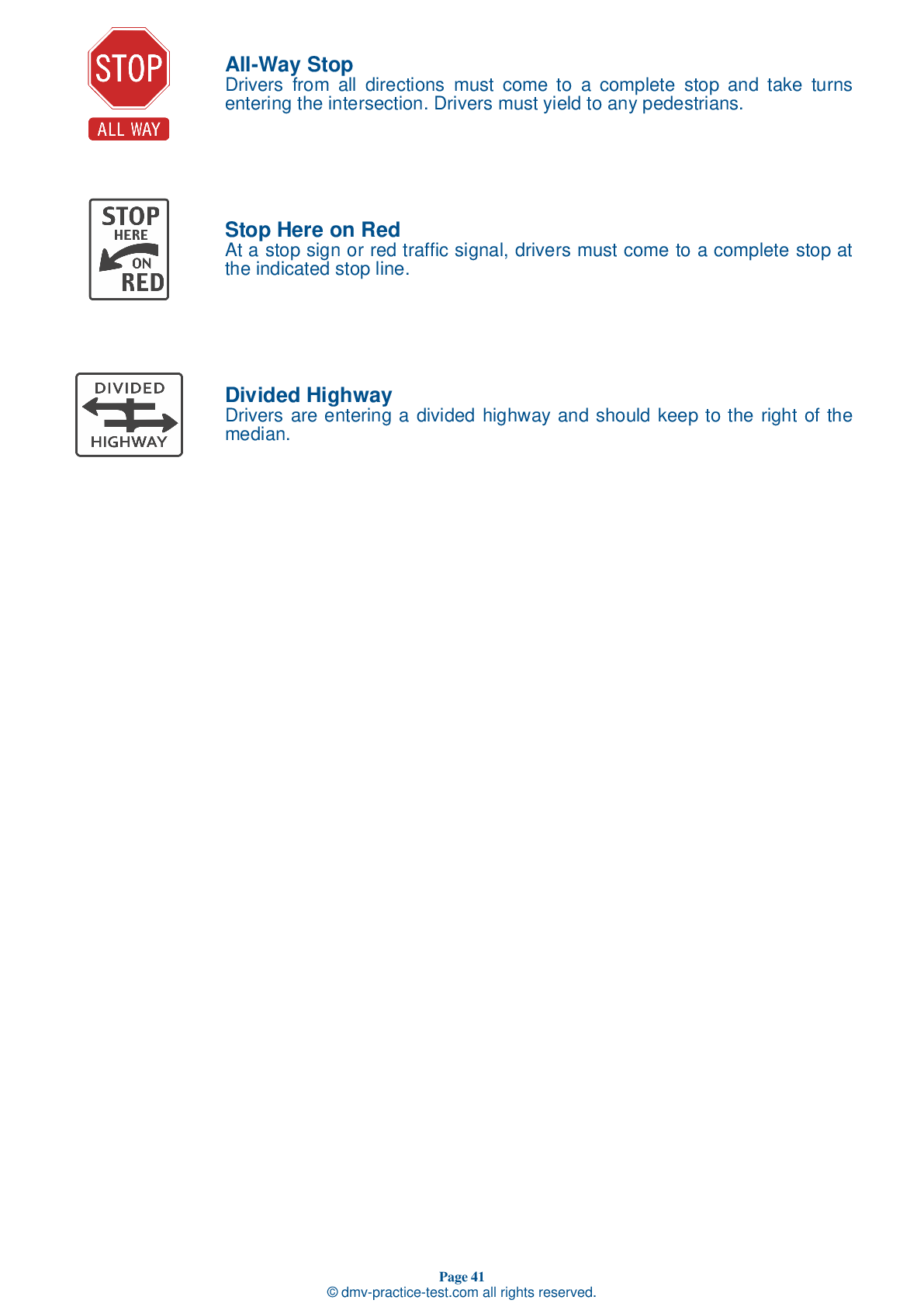FREE Minnesota DMV Practice Test #8 Page 2 of 5
The Minnesota DMV practise examinations have been updated for January 2025. It includes questions based on the Minnesota Driver Handbook's most essential traffic signals and laws for 2025. Use actual questions that are very similar (often identical!) to the DMV driving permit test and driver's licence exam to study for the DMV driving permit test and driver's licence exam.
On the practise exam, each question gets a tip and explanation to help you remember the concepts. The written component of the official Minnesota DMV test will include questions about traffic rules, traffic signs, and driving statutes, as well as knowledge from the Driver Handbook.
To obtain a passing grade, you must correctly answer 32 of the 40 questions. To help you prepare for your instruction permit or driver's licence, take our Minnesota DMV practise test.
The DMV exam is available in several languages.
Using any kind of testing assistance will result in an automatic fail, and the DMV may take additional action against your driver's licence, so stay away from it.
9 . This sign means:
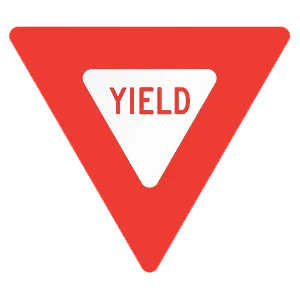
Decrease your speed as you approach an intersection with a yield sign. Prepare to stop and yield the right-of-way to vehicles and pedestrians in the intersection or crossroad. You must come to a full stop at a yield sign if traffic conditions require it.
10 . When stopped for a traffic violation or at an equipment check, the driver must produce:
When stopped for a traffic violation or at an equipment check, the driver is responsible for producing their license, proof of registration, and proof of insurance. Drivers are required to have all three of these documents in a vehicle when it is being driven.
11 . You are involved in an accident and another person is injured. You should:
After an accident, do not move the injured unnecessarily. Unskilled handling can make serious injuries out of minor ones. Keep the injured warm until skilled help arrives. If there is severe bleeding, attempt to stop the flow of blood with direct pressure.
12 . This sign means:
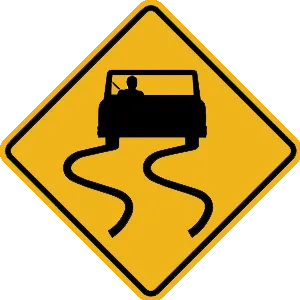
This sign warns that especially slippery conditions exist when the road is wet.
13 . When may you use hand and arm signals instead of mechanical turn signals?
During daylight hours, hand and arm signals may be used in addition to or instead of mechanical turn signals. You may not use hand signals at night or while driving a vehicle constructed or loaded so that hand signals are not clearly visible to other drivers.
14 . When approaching an uncontrolled intersection, a driver should:
At an intersection where there is no stop sign or traffic signal, you should yield to a vehicle approaching the intersection from the right. However, always be prepared to yield to avoid a crash. Do this by taking your foot off the accelerator, covering the brake, and looking left, right, and left again.
15 . To safely pass a bicycle, you should:
When passing a bicyclist, slow down and give them as much space as you can. Bicyclists have much less protection than drivers of motor vehicles and they should not be crowded. Passing a bicycle too quickly can shift the bicyclist off-course.
16 . This sign means:
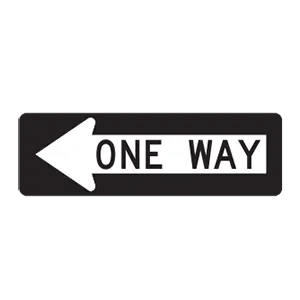
Regulation signs regulate traffic speed and movement, displaying rules which drivers must obey. This sign tells drivers the direction in which they must drive when turning onto a one-way street.
See the exact questions that will be on the 2025 Minnesota DMV exam.
99.2% of people who use the cheat sheet pass the FIRST TIME
LT gives us an insight on how the cheat sheet provided her with all the study questions she needed before taking her test.
Joe initially studied with the handbook and failed his test, he eventually found us online, studied and pass his test the first time around.
